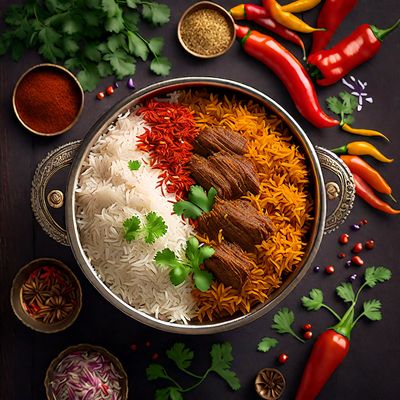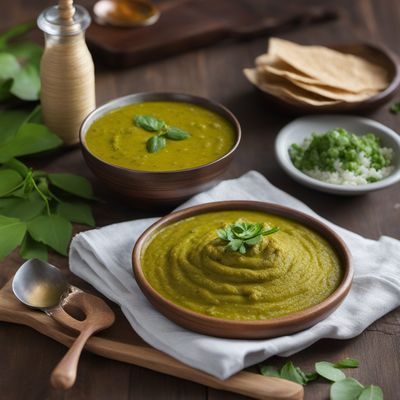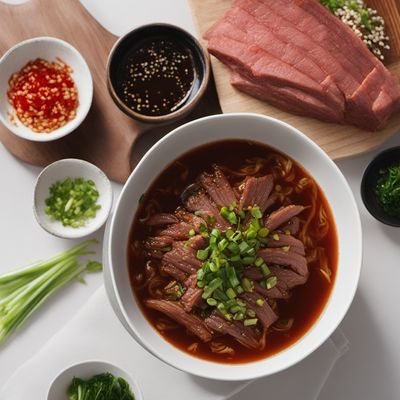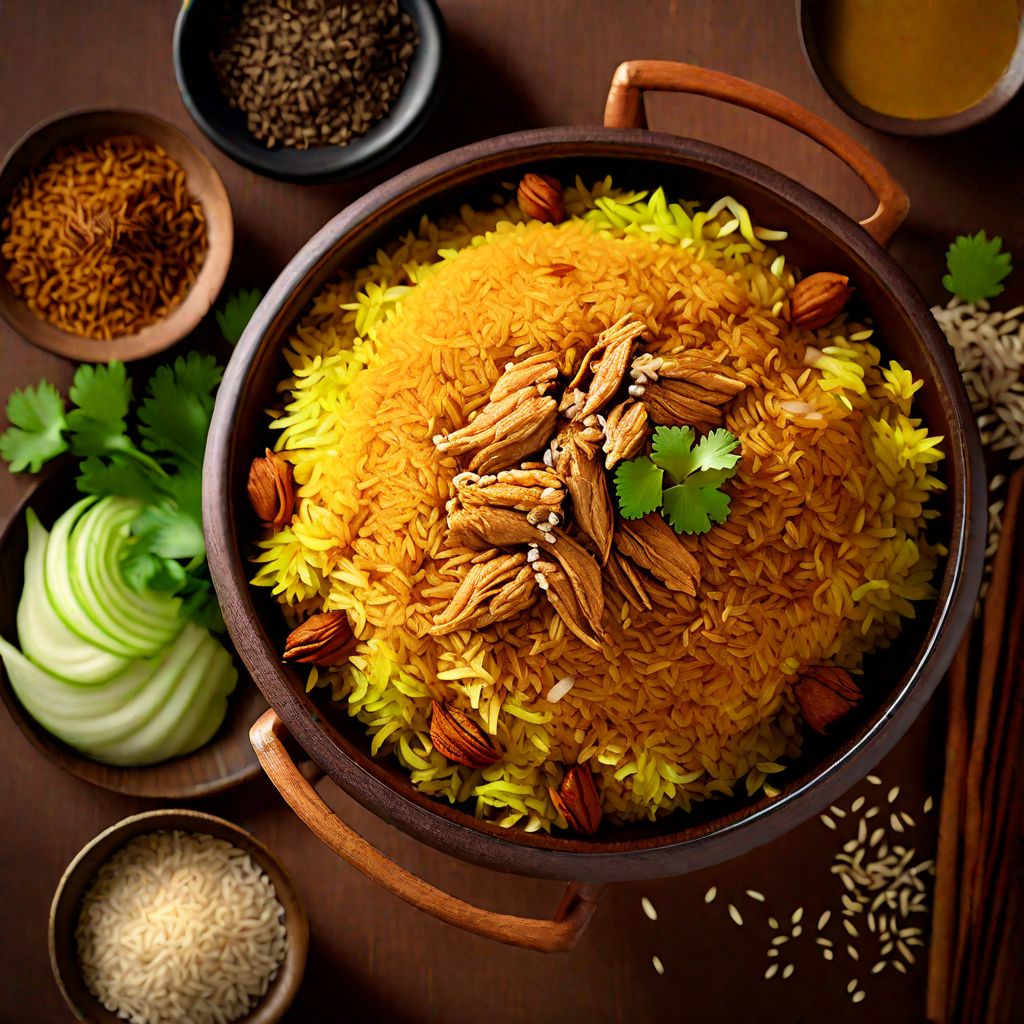
Recipe
Korean-inspired Biryani
Kimchi Biryani: A Fusion of Korean and Indian Flavors
4.8 out of 5
In the vibrant world of Korean cuisine, we bring you a unique twist on the classic Indian dish, Biryani. This Korean-inspired Biryani combines the fragrant spices of India with the umami flavors of Korea, resulting in a harmonious fusion that will tantalize your taste buds. Get ready to embark on a culinary adventure that blends the best of both worlds!
Metadata
Preparation time
30 minutes
Cooking time
30 minutes
Total time
60 minutes
Yields
4 servings
Preparation difficulty
Medium
Suitable for
Omnivore, Gluten-free, Dairy-free, Nut-free, Low-FODMAP
Allergens
N/A
Not suitable for
Vegan, Vegetarian, Paleo, Keto, High-FODMAP
Ingredients
While the traditional Indian Biryani is known for its aromatic spices and rich flavors, the Korean-inspired Biryani incorporates elements of Korean cuisine. This adaptation introduces ingredients like kimchi, gochujang (Korean chili paste), and sesame oil to infuse the dish with a distinct Korean flair. The result is a delightful fusion that marries the best of Indian and Korean culinary traditions. We alse have the original recipe for Biryani, so you can check it out.
-
2 cups (400g) basmati rice 2 cups (400g) basmati rice
-
1 lb (450g) chicken, cut into pieces 1 lb (450g) chicken, cut into pieces
-
1 cup (200g) kimchi, chopped 1 cup (200g) kimchi, chopped
-
2 tablespoons gochujang (Korean chili paste) 2 tablespoons gochujang (Korean chili paste)
-
1 tablespoon sesame oil 1 tablespoon sesame oil
-
1 onion, thinly sliced 1 onion, thinly sliced
-
4 cloves garlic, minced 4 cloves garlic, minced
-
1-inch ginger, grated 1-inch ginger, grated
-
1 teaspoon turmeric powder 1 teaspoon turmeric powder
-
1 teaspoon cumin powder 1 teaspoon cumin powder
-
1 teaspoon coriander powder 1 teaspoon coriander powder
-
1 teaspoon garam masala 1 teaspoon garam masala
-
1 cinnamon stick 1 cinnamon stick
-
4 cardamom pods 4 cardamom pods
-
4 cloves 4 cloves
-
2 bay leaves 2 bay leaves
-
1 cup (240ml) chicken broth 1 cup (240ml) chicken broth
-
Salt, to taste Salt, to taste
-
Fresh cilantro, for garnish Fresh cilantro, for garnish
Nutrition
- Calories (kcal / KJ): 450 kcal / 1884 KJ
- Fat (total, saturated): 12g, 3g
- Carbohydrates (total, sugars): 60g, 3g
- Protein: 25g
- Fiber: 4g
- Salt: 1.5g
Preparation
-
1.Rinse the basmati rice under cold water until the water runs clear. Soak the rice in water for 30 minutes, then drain.
-
2.In a large pot, heat the sesame oil over medium heat. Add the sliced onion and sauté until golden brown.
-
3.Add the minced garlic and grated ginger to the pot and cook for another minute.
-
4.Add the chicken pieces to the pot and cook until they are browned on all sides.
-
5.Stir in the turmeric powder, cumin powder, coriander powder, garam masala, cinnamon stick, cardamom pods, cloves, and bay leaves. Cook for 2 minutes to toast the spices.
-
6.Add the chopped kimchi and gochujang to the pot and mix well with the chicken and spices.
-
7.Add the soaked and drained basmati rice to the pot and gently stir to combine with the chicken and kimchi mixture.
-
8.Pour in the chicken broth and season with salt to taste. Bring the mixture to a boil, then reduce the heat to low, cover the pot, and let it simmer for 15-20 minutes, or until the rice is cooked and the flavors have melded together.
-
9.Remove the pot from heat and let it sit, covered, for 5 minutes.
-
10.Fluff the rice with a fork and garnish with fresh cilantro before serving.
Treat your ingredients with care...
- Kimchi — If you prefer a milder flavor, you can rinse the kimchi before chopping it. Adjust the amount of kimchi according to your taste preference.
- Gochujang — Adjust the amount of gochujang based on your desired level of spiciness. Add more for a bolder kick or reduce for a milder taste.
Tips & Tricks
- For an extra burst of flavor, marinate the chicken in a mixture of gochujang, sesame oil, and garlic for 30 minutes before cooking.
- If you don't have kimchi on hand, you can substitute it with sauerkraut for a similar tangy flavor.
- To make the dish vegetarian, replace the chicken with tofu or your favorite vegetables.
- Serve the Biryani with a side of Korean pickled vegetables, such as radish or cucumber, to enhance the Korean experience.
- Leftover Biryani can be stored in the refrigerator for up to 3 days and makes for a delicious next-day lunch.
Serving advice
Serve the Kimchi Biryani hot, garnished with fresh cilantro. Accompany it with a side of Korean pickled vegetables and a dollop of plain yogurt or raita to balance the flavors.
Presentation advice
To elevate the presentation, serve the Kimchi Biryani in individual bowls or on a large platter. Sprinkle some additional chopped cilantro on top for a pop of color.
More recipes...
For Biryani » Browse all
For Indian cuisine » Browse all

Homemade Spiced Vegetable Samosas
Flavorful Indian Delight: Homemade Spiced Vegetable Samosas

Baati with Panchmel Dal
Rajasthani Delight: Baati with Five Lentil Stew

Aloo Posto - Creamy Potato Curry with Poppy Seeds
Velvety Delight: Aloo Posto - The Perfect Blend of Creamy Potatoes and Nutty Poppy Seeds
More Indian cuisine dishes » Browse all

Egg bhurji
Indian scrambled eggs with spices
Egg bhurji is an Indian dish made with scrambled eggs and spices. It is a popular breakfast dish that is often served with bread or roti.
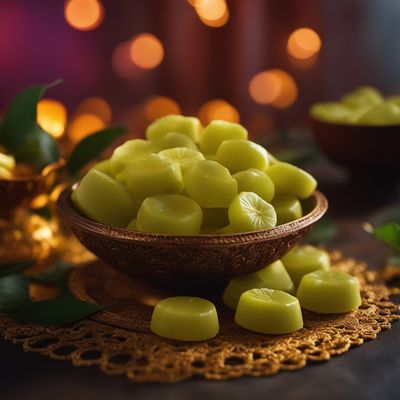
Agra petha
Agra petha is a popular Indian sweet made from ash gourd. It is a soft and chewy candy that is often flavored with saffron or rose water.

Tikka
Chicken Tikka
Tikka is a popular Indian dish made with marinated chicken that is grilled to perfection. It is a flavorful and healthy dish that is perfect for...
More Korean cuisine dishes » Browse all

Saengseonjeon
Fried fish cake
Saengseonjeon is a Korean dish made with battered and fried fish.

Tteok
Tteok is a Korean dish made from rice flour. It is often served as a dessert or snack food.

Hoedeopbap
Raw fish bibimbap
Hoedeopbap is a Korean dish made from raw fish and vegetables served over rice. It is a healthy and flavorful dish that is perfect for summer.

